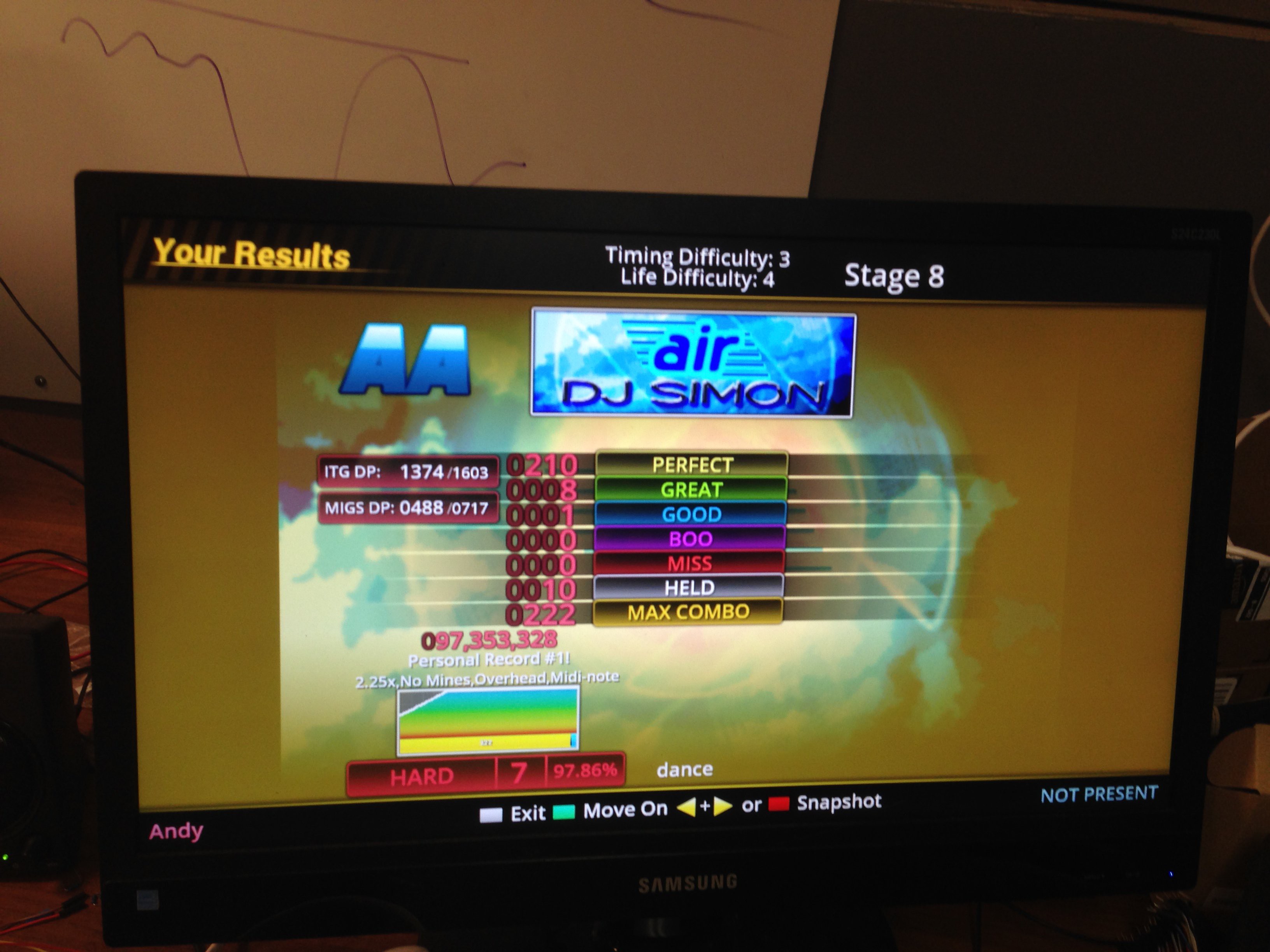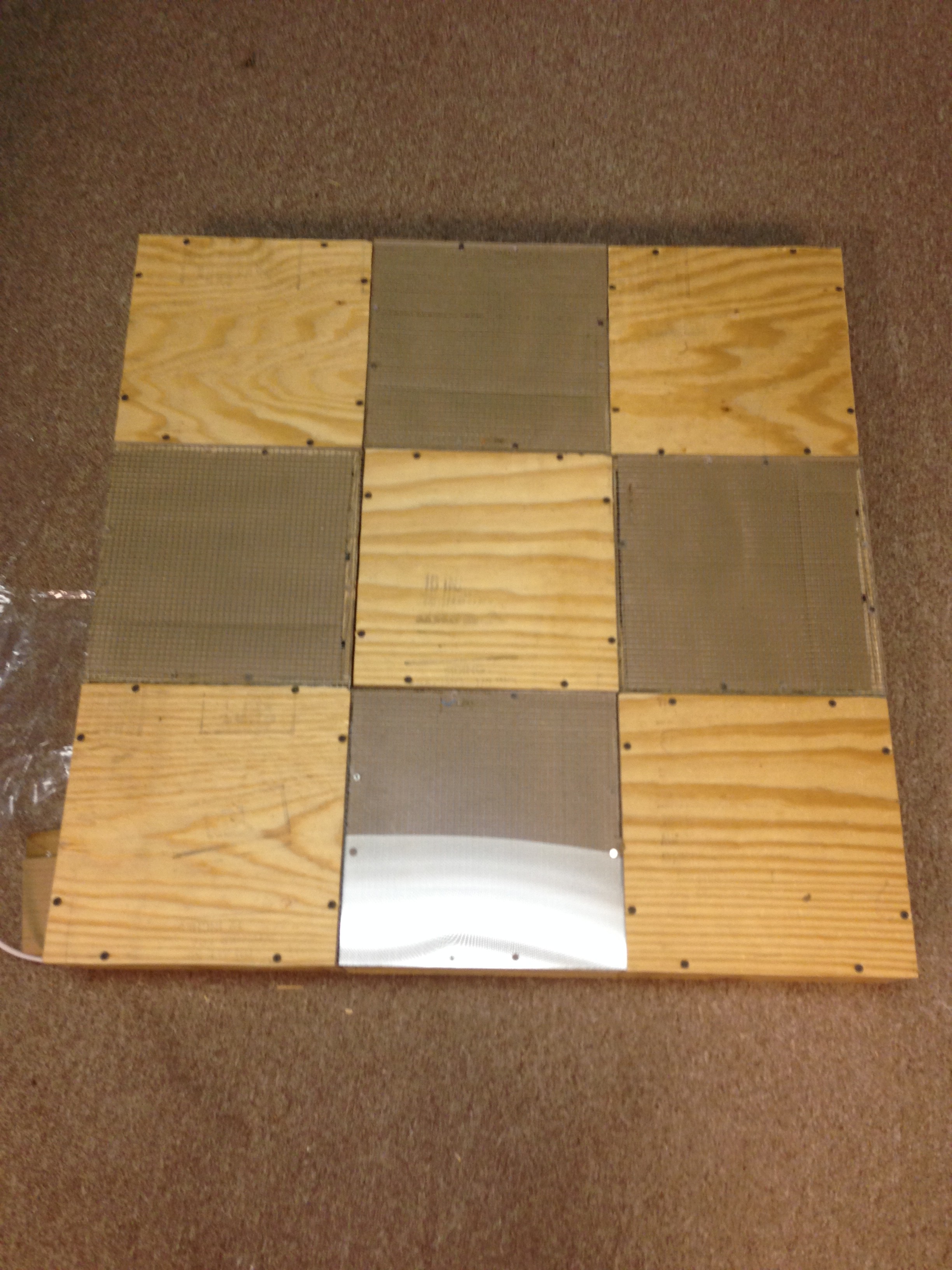I'm sure that the misses are player error. I was never a 'AAA' chaser.
Proof of concept. Sorry for the messy desk.
Here is the todo list for the 'release' version.
How sensitive is it?
The current version of the code reads the sensors every ~19ms.
The timing windows on DDR are as follows.
Marvelous +/-15ms Pad gets 1-2 reads
Perfect +/-30ms Pad gets 6-7 reads
Good+/-90ms Pad gets 9-10 reads
Can we Improve? I'd like to see cycles under 10 ms.
Using the built in functions timing can be adjusted by reducing the resistance between the send and receive pin (bringing signal closer to noise), or reducing the capacative sensor number of cycles measured(increasing noise). In order to get it to function at the sensitivity that it is at, I had to jumper ground from my home distribution box to my breadboard. This is because the pin on the ardurino wasn't clean enough (Ground goes though USB shield, through laptop, through the laptop charger to the wall outlet that may or may not be grounded.)
In theory, we can go faster. The reference project built his own header for reading the capacative sensors to make the process "faster" by making the sensor read as a background process. We would need to modify his header to get it to work for our purposes. We also don't have a number for what is "faster".
Whats with the cardboard?
I assumed that the cardboard dielectric between the sensor and ground was a bad/high capacitor and that lowing that capacitance would clean up my signal. I tried to replace the cardboard with an air gap, a sheet of laminate, and plastic bag. These would function, but would cause a short around 3 minutes in. I need to measure the capacitance of our cardboard capacitor (in pico-farads apparently we can do this with the ardurino. +/- 20pf) and see if I can get a clear material that will measure the same capacitance.
What is that noise?
The plexiglass is flexing when its stood on (100+ lbs) causing a squeaking noise. You get less audible noise when on your toes and moving fast. The plexiglass is (I assume) rubbing on the screws causing the noise. This is a mechanical problem and is not critical to the sensor operation. I am confident there is a solution.



Discussions
Become a Hackaday.io Member
Create an account to leave a comment. Already have an account? Log In.